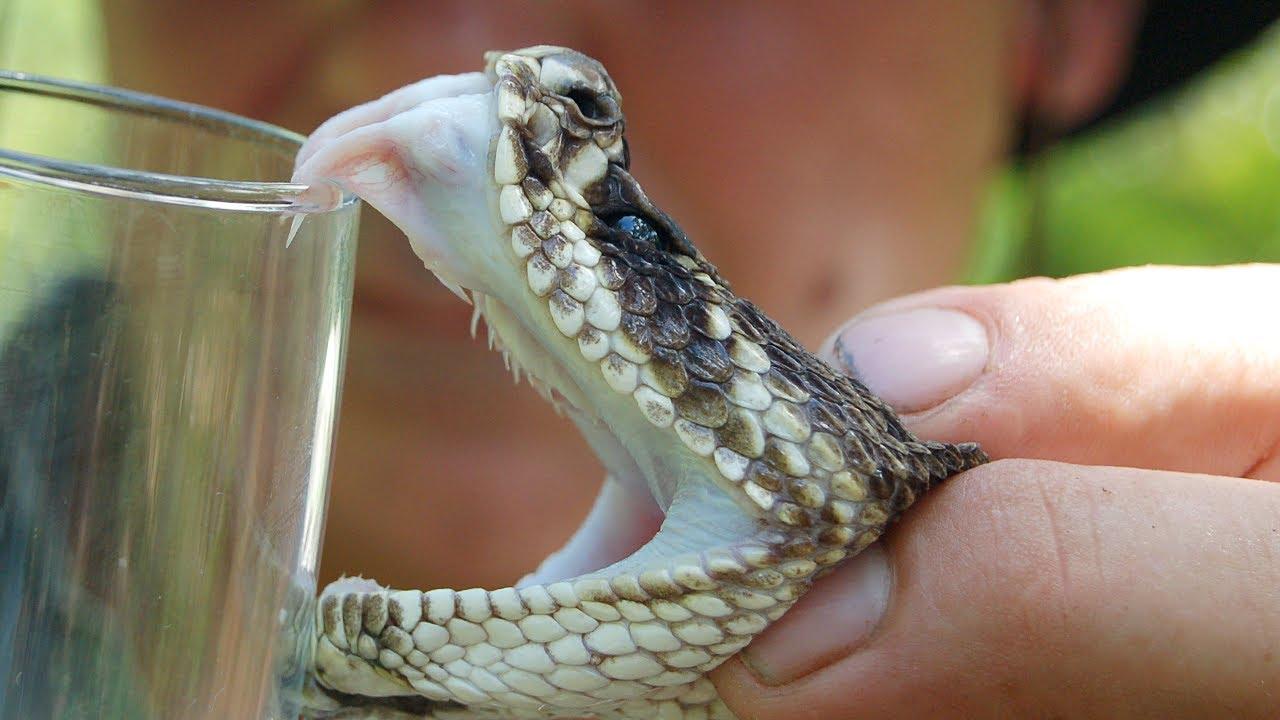Why Azerbaijan can't sell snake venom? Reason revealed

By Amina Nazarli
Snake's venom, the most dangerous animal poison in the wild life, can sometimes be deadly, but also has surprising qualities that are helping scientists find ways to cure many diseases.
From about 3,000 different species of snakes, approximately 600 are venomous, which poisons are made up of hundreds of different types of pep tides, enzymes, and toxins. Every snake produces its own specific venom.
To date, it has been proven that the microdoses of this product have a therapeutic effect in diseases such as neuralgia, rheumatism, hypertension and bronchial asthma. Quite often snake venom is used in the treatment of heart disease, stroke, cancer problems and Alzheimer's disease.
In medicine, snake venom is used only after a special treatment, since its composition includes lethal enzymes. However, despite this, snake venom has been used in medicine for many hundreds of years, although the mechanism of its action is not fully understood.
Currently, only three species of snakes including cobra, Macrovipera lebetina and viper are used for the production of medicines and their dose in ointments and injections does not exceed a tenth of a milligram.
All costs associated with the production of snake venom pay off the high cost of raw materials. So, 1 gram of dry venom on the world market is more expensive than gold -- about $600-$800. And the raw materials are easily transported and retain their properties for a long time.
For as long as 20 years, Azerbaijan produced the largest amount of snake venom of Levantine viper in the Soviet Union. The entire Soviet Union needed only five kilograms of dry snake venom, while Azerbaijan produced 3-3.5 kilograms, that is, 65-70 percent of the whole use, the rest of the snake venom was produced by the republics of Central Asia.
Currently, about 20 kilograms of snake poison worth $20 million is stored in the Zoology Institute of the Azerbaijan National Academy of Sciences.
Director of the Institute Elman Yusifov said that although this venom remained since the times of the Soviet Union, it did not lose initial quality.
Yusifov said that if the Institute will sell this venom to any foreign company they will be able to spend the received fund for the development and new projects of the Institute.
However, the issue is that the state agency cannot sell the available product, since it needs to obtain permission from international organizations and this requires an amount of $100,000.
Two years ago the issue with snake venom was also in the spotlight of the country, as the Institute of Zoology said that Azerbaijan planned to collect snake venom for sale. For this purpose the Institute cooperated with the relevant structures of Russia to test snake venom in the country and planned to establish a special lab for collecting snake venom.
Azerbaijan has a snake venom production farm in the Agsu region dating back to the 1970-80s, which is still engaged in this business. However, due little number of snakes designated for export abroad, interest in this area is not so strong.
It is simply regrettable that millions of dollars snake poison still remains unused, if to consider that the state has a great potential for the development of this sector, since the widest range of the distribution of Macrovipera lebetina in the South Caucasus dwell in Azerbaijan.
Azerbaijan is the country where 23 species of snakes inhabit. Some four of venomous and the others are non-venomous. The Transcaucasian viper, steppe viper, copperhead snake, and Asia Minor viper [which is listed in the Red Book of rare Azerbaijani animals and insects], are among the most poisonous snakes that are found in the country.
Some types of vipers of high value for medical use inhabit in the Gobustan region of the country. Moreover, two types of scorpions inhabit Azerbaijan, both of which contain valuable venom.
With this potential the country could become a leader on production and export of snake venom in the Central Asia, thus attract large revenues, but for the moment, the main goal is to revitalize the industry and settle export problems.
--
Amina Nazarli is AzerNews’ staff journalist, follow her on Twitter: @amina_nazarli
Follow us on Twitter @AzerNewsAz
Here we are to serve you with news right now. It does not cost much, but worth your attention.
Choose to support open, independent, quality journalism and subscribe on a monthly basis.
By subscribing to our online newspaper, you can have full digital access to all news, analysis, and much more.
You can also follow AzerNEWS on Twitter @AzerNewsAz or Facebook @AzerNewsNewspaper
Thank you!
